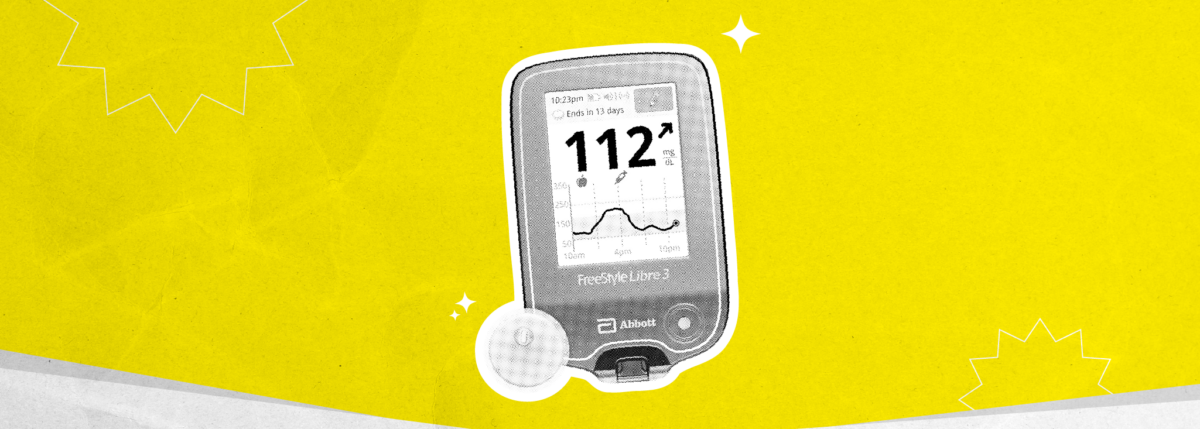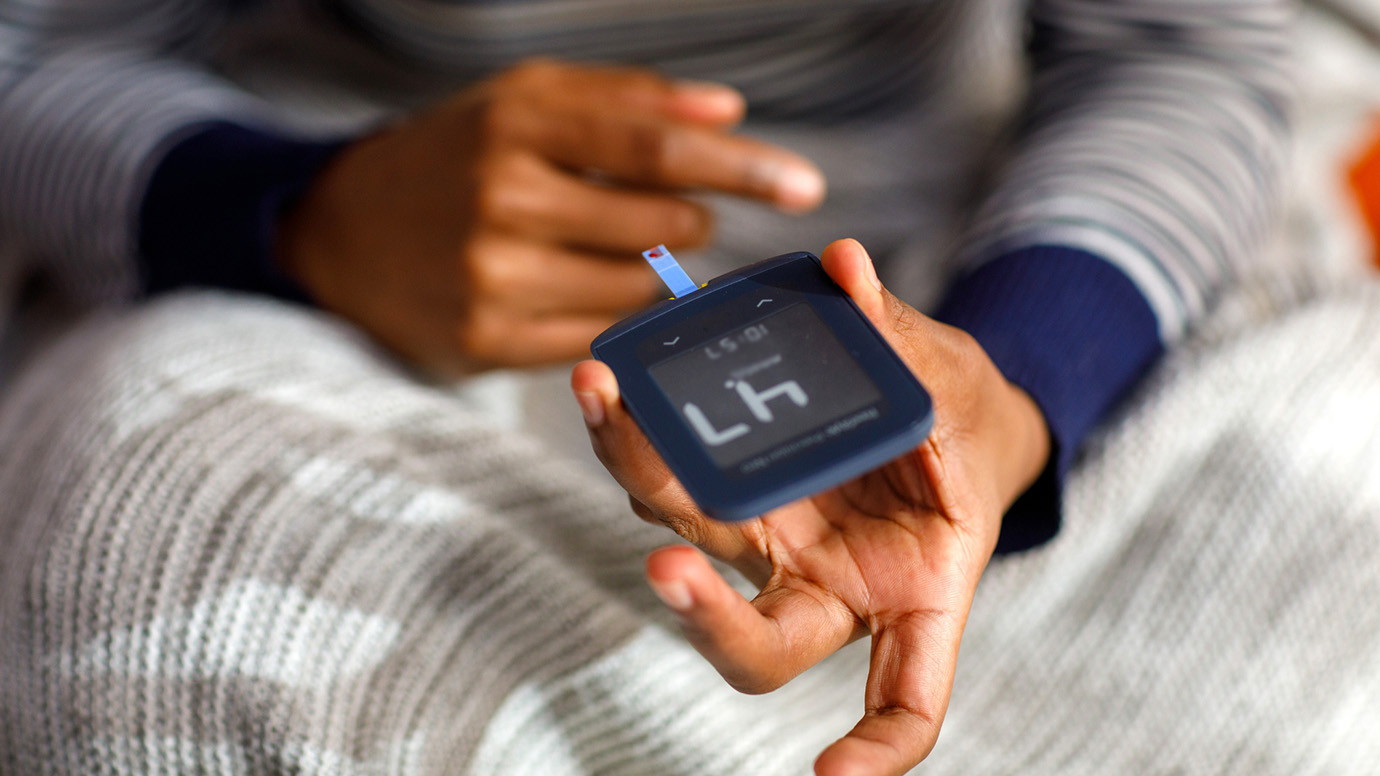My Dog Saved Me During a Severe Low
Written by: Julia Sclafani
5 minute read
September 19, 2022
Soon after Luc Daigle began using insulin to manage his type 2 diabetes, his dog alerted him to severe low blood sugar while he was sleeping.
Luc Daigle has his dog to thank for waking him up in the middle of the night in 2018.
“I was shaky, couldn’t speak properly. I really thought I was having a stroke,” Daigle recalled. Sweating and dizzy, he noticed he was slurring his speech and having trouble concentrating.
But it wasn’t a stroke. After eight years of living with type 2 diabetes (T2D) and shortly after beginning insulin, Daigle, 41, was experiencing severe hypoglycemia, or severe low blood sugar.
Hypoglycemia is when your blood sugar level drops below 3.9 mmol/dL70 mg/dL. Severe hypoglycemia is when your blood sugar level drops below 3 mmol/dL54 mg/dL. Having low blood sugar is dangerous and needs to be treated right away. Left untreated, severe hypoglycemia can lead to unconsciousness, seizures and though rare, even death.
You can find a printable graphic on hypoglycemia and how to treat it here.
Low blood sugar after starting insulin
Daigle, who lives in New Brunswick, Canada, was diagnosed with T2D in 2010 after seeing his doctor for a urinary tract infection.
For years, Daigle managed his diabetes with oral medication and lifestyle interventions like exercise. However, over time his blood sugar was less responsive to this treatment routine and in 2018 he started on long-acting insulin, Lantus.
Though he’s lived with diabetes for years, he’d never been thoroughly educated on insulin or how blood sugar management may look different from his previous regimen.
“I had one consultation with the diabetic clinic at the local hospital. [I got] no real information on how to calculate dosages,” Daigle remembered. “The nurse told me to take insulin according to my glycemia. No formula, no carb ratio.”
Going low in his sleep
One night a few weeks after beginning his insulin regimen, Daigle checked his blood sugar at around 7 p.m. Noticing it was a bit high, he gave himself some insulin and went to bed around two hours later.
Around midnight, Daigle’s dog started licking his face and making noises to wake him.
“I woke up, tried to stand up and I fell on the ground,” he recalled.
When he was able to stand again, instead of waking his wife, a nurse, he went to the kitchen to check his blood sugar. It was 3 mmol/L54 ml/dL. He was experiencing severe hypoglycemia.
Daigle walked back to the bedroom but struggled to wake his wife. It was time to look for a source of glucose to raise his blood sugar. Luckily for him, there was a bowl of Halloween candy nearby.
Correcting for a low—then a high
After 14 mini chocolate bars, a liter of apple juice and some cheese, he checked his blood sugar again. It was 5.1 mmol/L92 ml/dL.
“Not high enough to feel safe, so I had more chocolate and nuts and went back to bed,” he recalled.
Daigle is a paramedic and woke up around 5 a.m. that morning to get ready for work. When he checked his blood sugar again, it was high, just under 10 mmol/L180 ml/dL, so he had to make another correction with his morning injection.
Calculating a correction can be hard for anyone (have you ever rage bolused?), especially if you weren’t trained to calculate your insulin dose.
Even though he was prescribed insulin, Daigle wasn’t prescribed glucagon, a life-saving medication that can rapidly treat severe low blood sugar, which may have been a good option when he awoke feeling physically weak and unable to speak clearly.
How glucagon can help
Glucagon may also be the right choice if you aren’t able to drink or swallow food due because of hypoglycemia. It can also be administered by another person in the case that you’re unconscious.
It’s important that people around you know how to help—this can mean educating family, friends, or even a neighbor or coworker on severe hypoglycemia and what to do in the case you can’t treat a severe low blood sugar yourself.
Daigle and his wife are both health care workers, so he knows how to use glucagon, even though his diabetes care team never spoke to him about it.
Today, Daigle is well prepared to handle low blood sugar events. He keeps a hypoglycemia kit stocked with glucagon, candy and other supplies that help him treat himself quickly when he starts to go low.
Fine-tuning diabetes management with insulin
Daigle now takes extra steps to prevent and anticipate low blood sugar, including checking his blood sugar levels more frequently.
Daigle has experienced hypoglycemia since that night in 2018: “I miscalculated my insulin intake or didn’t have time to finish lunch,” he recalled.
We all know life happens and lots of variables impact our blood sugar levels. What’s important is being alert to the symptoms of low blood sugar and being able to address it when it happens.
“If that dog hadn’t woken me up, I wouldn’t be alive today,” he said.
Set yourself up for success
Equipped with the right knowledge and tools, you can thrive while using insulin to manage T2D. The key is to have a plan for emergencies like hypoglycemia.
This may include storing glucose tablets or your favorite low snacks where you might need them—like in your desk, car, gym bag, or bedside table. It can also include requesting a glucagon prescription and keeping it filled and up to date.
The American Diabetes Association recommends any person at risk for hypoglycemia be prescribed glucagon. Despite this, health care providers don’t consistently prescribe it and when they do, fill rates are low.
However, studies show that when glucagon is prescribed early following diagnosis, people are more likely to fill their prescription—and filling a prescription early is associated with fewer hypoglycemia-related hospital visits.
So, if glucagon sounds like a tool that could help you manage and treat low blood sugar events, don’t be afraid to bring it up with your provider. Remember, you are your own best advocate for your T2D management!
Editor’s note: Educational content related to severe hypoglycemia is made possible with support from Lilly Diabetes, an active partner of Beyond Type 2 at the time of publication. Editorial control rests solely on Beyond Type 2.
Related Resources

Managing diabetes can feel like a daunting journey, but for Chef Robert Lewis, it’s been...
Read more

Managing type 2 diabetes means keeping your blood sugar levels within a healthy range and...
Read more

Physical activity plays a crucial role in managing diabetes, and walking is an easy, effective...
Read more


